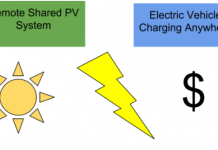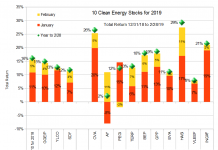This is a continuation of a series looking into the financial stability of companies in Energy Tech Stocks’ "Wise Energy Use" index, described in part 1. The first article in the series looks at three efficient lighting companies, while this one looks at four electric vehicle stocks and a private company, as described here.
Electric Vehicles… Good, but not Disruptive
I personally don’t consider investing in any car companies, even relatively fuel efficient ones. Either or both lean economic times and high oil prices are likely to lead to lower use of cars over the next few years, and this will likely weigh on car companies. I’m more enthusiastic about relatively economical forms of transport, such as bikes, scooters, light rail, and busses. Electrification is likely the future of ground transport, but which will come first, the electric car, or the electric bus?
New car sales typically rely on financing and consumer demand, something which could weigh heavily on all automobile manufactures, even for efficient vehicles. But I didn’t create the index, I’m just screening it for companies I think will stay strong in a prolonged downturn.
I agree with Neal’s post yesterday where he says, "In energy, there is no disruptive technology, only disruptive policy that makes some technologies look disruptive after the fact." Neal makes an excellent case that Silicon Valley ingenuity will not overcome the energy industry. The disruption, when it comes, will not be a better car, like a plug-in hybrid… it will come in the form of people abandoning the personal car for something better.
Today, I was at the Colorado New Energy Economy Conference, and I saw Neal’s "disruptive policy" coming in the form of Denver’s new Strategic Transportation Plan. According to Bill Vidal, of Denver Public Works, Denver transportation planning has taken a new focus. No longer will Denver transportation be car-centric. It will instead focus on moving people, goods, and info, becoming more multi-modal. A move to multi-modal transport will not be good for car companies. While Denver may be on the forefront of progressive transportation, they are not the only ones, and a slowing economy is as much a driver of multi-modal transportation options as is a rising oil price.
So while I don’t like any of the car companies in the Wise Energy Use Index, there is a bus company I like.
Nissan (NASD:NSANY). Financial data from 1Q 2008. First quarter operating income was a positive 80 Billion yen, and they have a current ratio is about 1.3. This is not bad, but I’d spend a lot more time scrutinizing their financing needs over the next few years before I would invest, if I were so inclined. Nissan may be looking into electric vehicles, but if few people are buying any vehicles, how much will that help the company?
Mitsubishi Motors (MMTOF.PK). Financial data from 1Q 2008. Although Mitsubishi had positive operating income of about 10 billion yen in the first quarter, current liabilities exceeded current assets, with a current ratio of 0.87. This might not be a reason to worry in ordinary times, but we are not living in ordinary times.
Toyota Motor (NYSE:TM). Toyota’s current ratio is almost exactly 1, but they did have operating cash flow of $30 Billion in the first quarter. Like Nissan, Toyota may be able to survive without tapping the financial markets for a while, but I’m still uncomfortable owning any auto firm, even a progressive one such as Toyota. Also like Nissan, I’d take a hard look at the next few years’ financing needs before I decided to invest, if I were so inclined.
Ener1 (AMEX:HEV). Battery, Fuel Cell, and Nanotech company Ener1 is not one I’ve considered before, partly because the ticker and company description make me think that they’re slick marketers, while I’m more interested in boring companies that don’t know how to get investors interested in their story. Nevertheless, their technology is not totally tied to cars, and they have a fairly solid balance sheet with a current ratio of 7.7. Their current assets less current liabilities are slightly larger than their twelve month operating cash loss, and they have no debt. Ener1 should be able to survive for about a year without going to the capital markets again for new financing, so if you’re betting on a quick resolution of the financial crisis, this is a company you might consider for your wise energy use portfolio. I will not be making that bet.
A123 – This widely acclaimed lithium-ion battery company is private, and so not available to stock market investors, nor dues it publish financial statements. They are planning an IPO, but until the prospectus is available, I won’t be able to say anything about the financials. Unless markets improve, I don’t expect the IPO to take place.
DISCLOSURE: Tom Konrad has no position in any of these companies.
DISCLAIMER: The information and trades provided here are for informational purposes only and are not a solicitation to buy or sell any of these securities. Investing involves substantial risk and you should evaluate your own risk levels before you make any investment. Past results are not an indication of future performance. Please take the time to read the full disclaimer here.









The disruptive policy will come when California taxes carbon emission. Carbon trading is just around the corner. Our governments will not be able to resist the tax stream.
Tom,
I’ve bought JCI because of their efficiency business. Why doesn’t the business JCI does with automakers make them a risky investment?
As we’ve seen recently, every stock market investment is a risky investment.
I do think that the auto focus of JCI is a downside, since many fewer cars will be sold.
The question is, will the upside in EE and the opportunity to buy other battery makers at distressed prices make up for losses in the automotive market?
Johnson is not as exposed to the consumer because of its other divisions, but that will be a drag on the stock.
JCI is in part 4 or this seris, which I’ll publish Sunday.